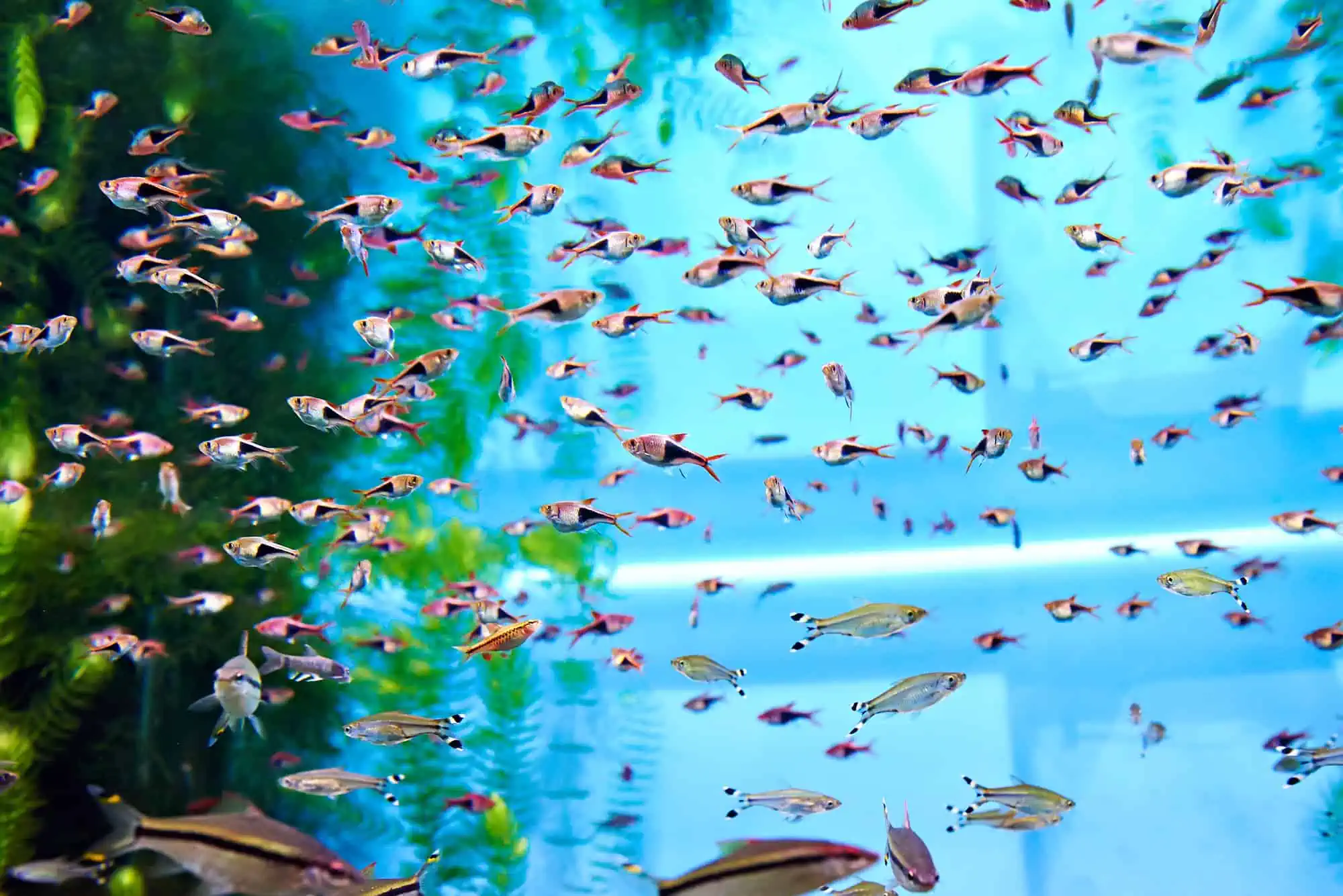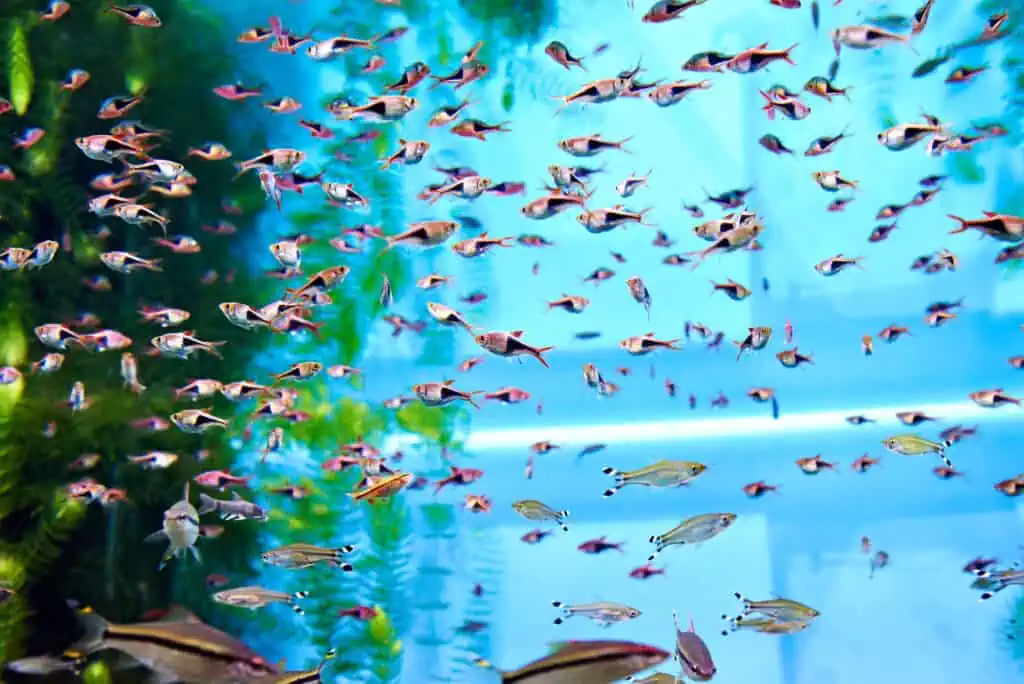When I began my fishkeeping journey 40 years ago, one thing I really wanted to get into was breeding from my fish. After several false starts, a few minor successes, and lots of failures, I’ve successfully raised many different species, including bettas, Kribensis, and guppies.
Breeding aquarium fish is a fun, fascinating hobby for any fish fan. In this comprehensive guide, I’ll share 11 valuable insights from my many years of experience as an aquarist, covering everything from breeding conditions to species selection and raising fry.
Key Takeaways
- Research Leads to Success: Understanding the specific needs and preferences of the type of fish species you intend to breed is fundamental. Mimicking their natural habitat is key to encouraging spawning.
- Conditioning and Consistency: Healthy breeding pairs and stable water parameters set the stage for successful fish breeding habits. Consistently maintained tanks and well-fed fish are more likely to produce healthy offspring.
- Learn and Adapt: Every breeding attempt is an opportunity to improve. Use your experiences and the wealth of information available online and in fishkeeping communities to refine your breeding techniques.
Research and Understand the Species
Before you take home any fish species from your local fish store, be sure to thoroughly research the specific requirements of the fish species you intend to breed.
Every species has its distinct preferences for water parameters, diet, and tank mates. In addition, if you can replicate the fish’s natural habitat, creating an optimal breeding environment is much easier, making successful spawning more likely.
Optimal Breeding Conditions
Once you’ve established your tank, it’s essential to maintain stable and optimal water conditions. The aquarium must be fully cycled, and the temperature, pH, and water hardness must match that found in the species’ natural environment.
It was actually my neon tetras that taught me the importance of maintaining consistent parameters. Mimicking their South American blackwater environment with soft, slightly acidic water and subdued lighting triggered successful spawning.
The main lesson to learn here is that consistency is key; sudden changes in water conditions can stress the fish and cause your breeding program to fail dismally.
Select Healthy Breeding Stock
Remember that healthy parents contribute to the overall well-being and vigor of their offspring., so you must choose robust, healthy fish for breeding.
When you visit your local fish store in search of a breeding pair, inspect potential candidates for any signs of illness, physical deformities, or abnormalities. Be sure to quarantine new fish before introducing them to the breeding tank to prevent the spread of diseases.
Know that many fish are pretty fussy when it comes to choosing a mate; you can’t simply pick a random male and female and expect them to spawn!
For example, unlike guppies, Kribensis are monogamous and form a bonded breeding pair. I find the best way to go about finding your perfect Krib couple is to buy a group of juvenile fish and allow them to pair off naturally. Ideally, your group of youngsters should contain one male to two or more females.
Provide Adequate Hiding Places
Many species, including Kribs and some cichlids, need plenty of hiding spots in their habitat. These can be clumps of dense plants, caves, or artificial decorations, all of which offer a sense of security for breeding pairs, provide nesting sites, and give vulnerable fry shelter once they hatch.
In the case of betta fish, the male will build a bubble nest underneath a flat leaf or sometimes in the top corner of your tank. Kribs prefer to excavate a nest inside a cave, so I find an upturned terracotta pot works well for this species. African cichlids are highly territorial and choose rock formations as a territory and to provide shelter for fry. Again, you need to research the species you want to breed to find out what conditions they prefer to give you the best chance of success.
Condition the Breeding Pair
Breeding takes lots of energy on the part of the fish, so before you start attempting to trigger spawning, your breeding pair or group must be conditioned properly.
To bring your fish into breeding condition, offer them high-quality live or frozen foods, replicating as closely as possible the diet the fish enjoy in their wild environment. This step is crucial for triggering the breeding instincts of the fish, so don’t take shortcuts!
For me, it was breeding betta fish that highlighted the importance of offering a diverse diet to bring the pair into breeding condition and triggering successful spawning.
Monitor and Trigger Breeding Behavior
It’s essential to pay close attention to the behavior of the breeding pair since many fish species display specific behaviors as a prelude to spawning. That can include nest-building, courtship rituals, increased territoriality, males chasing females, or heightened aggression toward tank mates.
Separate Breeding Pairs After Spawning
Once spawning has taken place, it’s usually necessary to remove the parent fish to prevent them from eating their eggs or fry. That also provides a more peaceful environment for the fry to develop without the stress of interference from adult fish.
Of course, there are many exceptions to that rule, and some species make excellent parents. For example, female Kribensis escort their babies around the tank while the male stands guard over them. In addition, some cichlids are mouthbrooders, carrying their young around in their mouths until the babies are big enough to fend for themselves safely. However, regardless of what fish species you’re breeding, if you don’t use a dedicated spawning tank, it’s essential to remove tank mates that might make a meal of the eggs or fry.
Properly Manage the Breeding Tank

Although many fish species are tolerant of slight fluctuations in water conditions and temperature, many are not, so it’s vital to manage and maintain the environment in the breeding tank properly.
Start with very frequent water changes to ensure clean water. Spawning tanks are typically much shallower than regular aquariums, so you must change the water more often, ideally every day or two. Some breeders prefer to leave the tank floor bare, making it easier to clean. In addition, if breeding a species that tends to eat the eggs, setting a fine mesh over a bare tank bottom makes it much easier to remove the eggs once they’ve been fertilized.
To keep the water fresh and clean, use an efficient filter system. To prevent the fry from being sucked into the filter inlet, I always use a sponge filter in my breeding tanks.
Feed Fry Correctly
Choosing the right food for your fry is crucial for their survival and healthy growth.
Once the fry has exhausted the nutrition in their egg sacs and is free-swimming, I always start by feeding them infusoria, microworms, and commercially produced liquid fry food. Once the fry grows, you can gradually introduce more diverse food sources that are small enough for the baby fish to cope with. It’s essential to feed the fry multiple times every day to fuel their rapid metabolism.
Breeding fancy guppy fish showed me the importance of providing appropriate food for fry. The step-by-step approach to feeding outlined above proved vital for the babies’ development into healthy, vibrant adults with beautiful, sparkling colors.
Gradual Introduction to the Main Tank
Once your fry has grown into small juveniles, you can gradually introduce them to your main display tank. Keep a close eye on the babies to be sure they’re not bullied by other fish, and provide lots of hiding spots where the juveniles can take shelter if necessary.
This integration period can be tricky, especially if you have territorial species or fish that feed on small crustaceans and the like. However, I find that including dense, bushy planting, caves, and rocky overhangs helps to keep the babies safe and prevents them from getting stressed.
Learn From Each Breeding Experience
As with every fishkeeping adventure, treat every breeding attempt as a learning opportunity. Make a note of what went well and what could be better. That knowledge will be invaluable for future breeding projects and can contribute to your overall success as a seasoned aquarist.
Take advantage of the many online fishkeeping forums out there and learn from other aquarists’ successes and failures, and take time out to read well-researched articles, where you can find a wealth of invaluable help.
Final Thoughts
Breeding any species of aquarium fish is a captivating journey that requires dedication, knowledge, and a genuine passion for these wonderful creatures.
Take time to research the species you want to breed, provide an environment that replicates the fish’s natural habitat as closely as possible, and offer your breeding stock a high-quality, varied diet to bring them into prime spawning condition.
Happy fish breeding!


